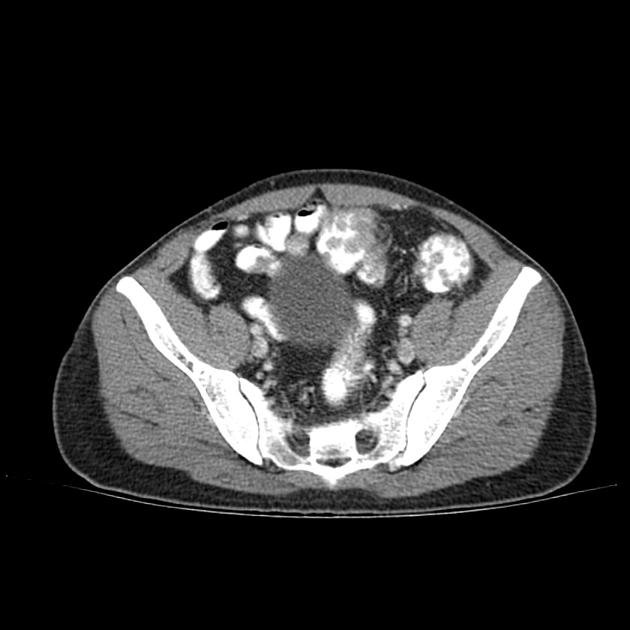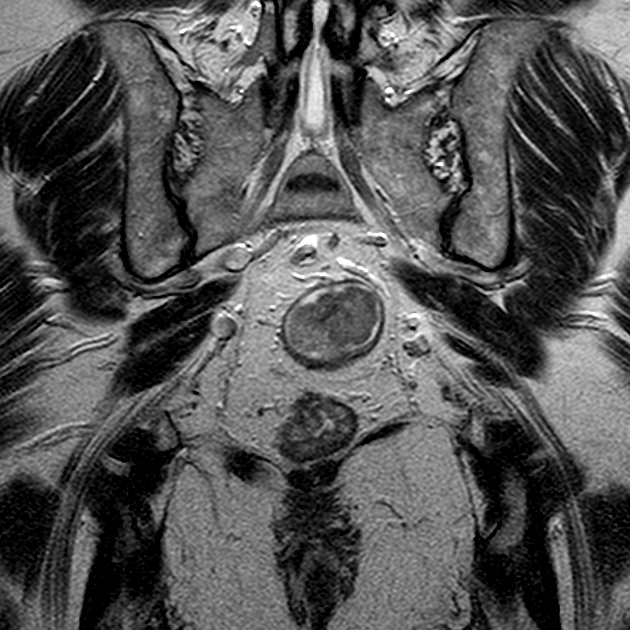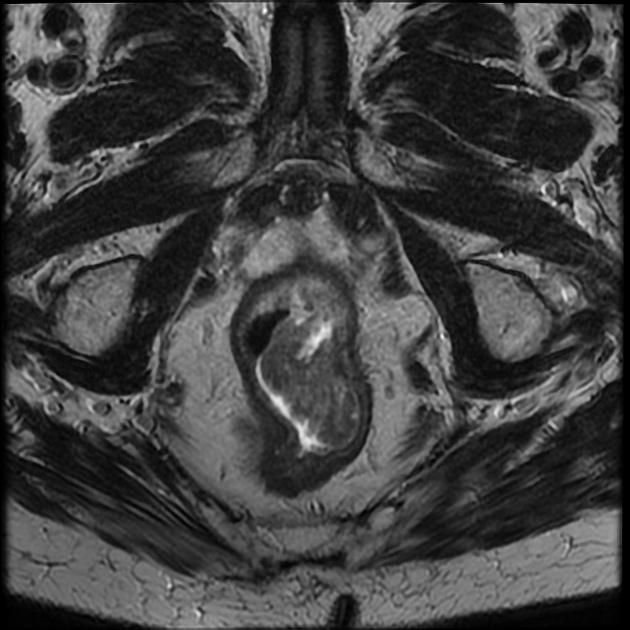Colon polyps are mucosal outgrowths of the colon wall. They are of interest to physicians and radiologists because of the accepted progression of adenomatous polyps to colon carcinoma.
On this page:
Images:
Pathology
-
serrated colonic polyps / colorectal serrated polyps: pathologically diverse group of lesions that can include
Adenomatous colon polyps are thought to progress histologically from adenoma to dysplasia, to carcinoma; thus screening detection of precancerous polyps is considered useful. The individual risk for a polyp progressing to cancer is low, in the order of 3% and it is thought that it takes 10-15 years for a polyp to devolve into carcinoma.
Patients with familial adenomatous polyposis (FAP) have a markedly increased number of colon polyps, often numbering in the hundreds, with a corresponding increased risk of malignant degeneration.
Radiographic features
Imaging modalities cannot differentiate between different polyp histologies, which is defined at pathology.
Colon polyps are most often detected during colonoscopy, which is considered the gold standard for detection. Colonoscopy also has the added benefit of being able to snare and remove any polyps encountered. Flexible sigmoidoscopy may also be used, although the entire colon is not visualized.
Non-invasive radiologic imaging can also detect polyps. In the past, this was traditionally accomplished with a barium enema (usually double contrast for polyp detection), however, CT colonography is playing an increasing role in polyp detection. Barium enema has a significantly decreased sensitivity and specificity for polyp detection (~50% of polyps >1 cm detected on colonoscopy were seen on double contrast barium enema) 4.
Various names signs for polyps have been historically described on barium studies.
Bowler hat sign: filling defect that resembles a bowling hat. A hat oriented towards the lumen represents a polyp while a hat oriented away from the lumen represents a diverticulum
Target sign: seen when a polyp with stalk is viewed en face
Treatment and prognosis
Because of the benefits of screening, screening studies (usually colonoscopy) are recommended at age 50 for men and women. The actual screening program depends on the patient's region and risk factors, however. Screening at age 40 years or younger is recommended for patients at higher risk (e.g. FAP). Patients with FAP often receive prophylactic total colectomy.
The risk of malignancy of a colon polyp varies with its size
<5 mm: <1% risk of cancer
5-9 mm: <1-2% chance of cancer
10-20 mm: ~10% chance of cancer
>20 mm: 40-50% chance of cancer
Other features may indicate that a polyp is higher risk
≥3 adenomas
high-grade dysplasia
villous features
These high-risk patients should receive a follow-up screening study sooner than the general population (3-year follow-up with colonoscopy is suggested). Lower risk patients may follow up in 5-10 years, and patients with only hyperplastic polyps need only a 10-year follow-up evaluation, like the general population.








 Unable to process the form. Check for errors and try again.
Unable to process the form. Check for errors and try again.